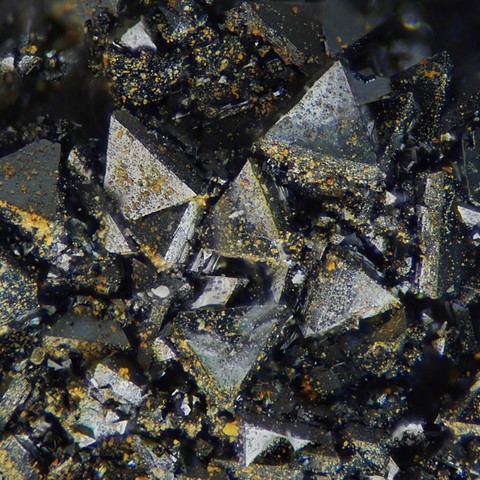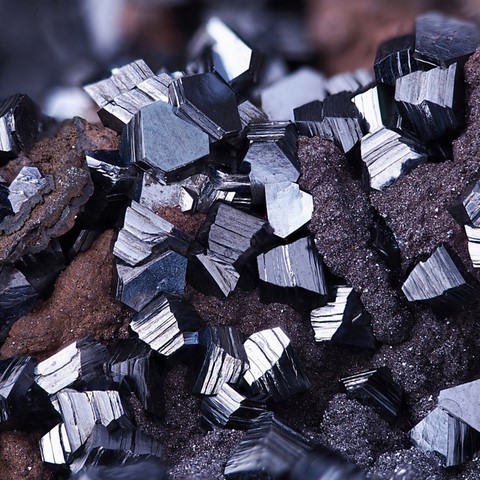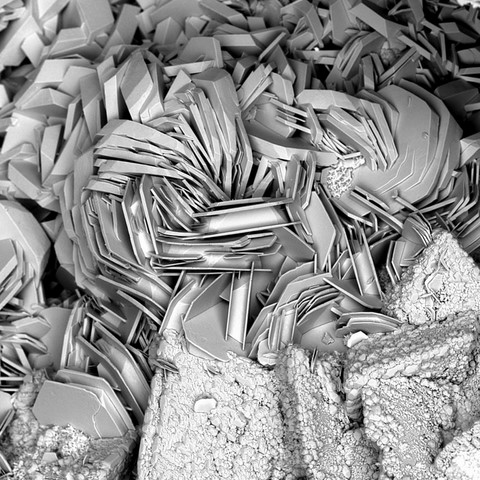CHALCOPHANITE
Class : Oxides and hydroxides
Subclass : Hydroxides and hydrates
Crystal system : Trigonal
Chemistry : ZnMn3O7 3H2O
Rarity : Quite common
Chalcophanite is a secondary mineral of the supergene oxidation zone of zinc and manganese deposits, where it accompanies various oxides of zinc, manganese and iron. Its name comes from the Greek khalcos and phainein (to appear) which reveals the particularity of this mineral to change color under the effect of heat (from black to coppery bronze). It occurs in small tabular or lamellar crystals commonly pseudo-octahedral, not exceeding 8 mm, in geodic botryoidal masses, or in stalactitic aggregates. It is a bluish to iron-black mineral. It is an accessory manganese ore.
Main photo : Chalcophanite from Torgal Mine, Portugal © Pedro Alves
Chalcophanite in the World
Twinning and special crystallizations
No twin known for this mineral species.
Fakes and treatments
No fakes identified for this mineral species but very easy to confuse with hematite, pyrolusite or goethite without chemical analysis...
Hardness : 2 to 2.5
Density : 3.35
Fracture : Conchoidal
Streak : Blue
TP : Translucent to transparent
RI : 1.712 to 1.732
Birefringence : 0.020
Optical character : Biaxial -
Pleochroism : Visible
Fluorescence : None
Solubility : Acids
Magnetism : None
Radioactivity : None





